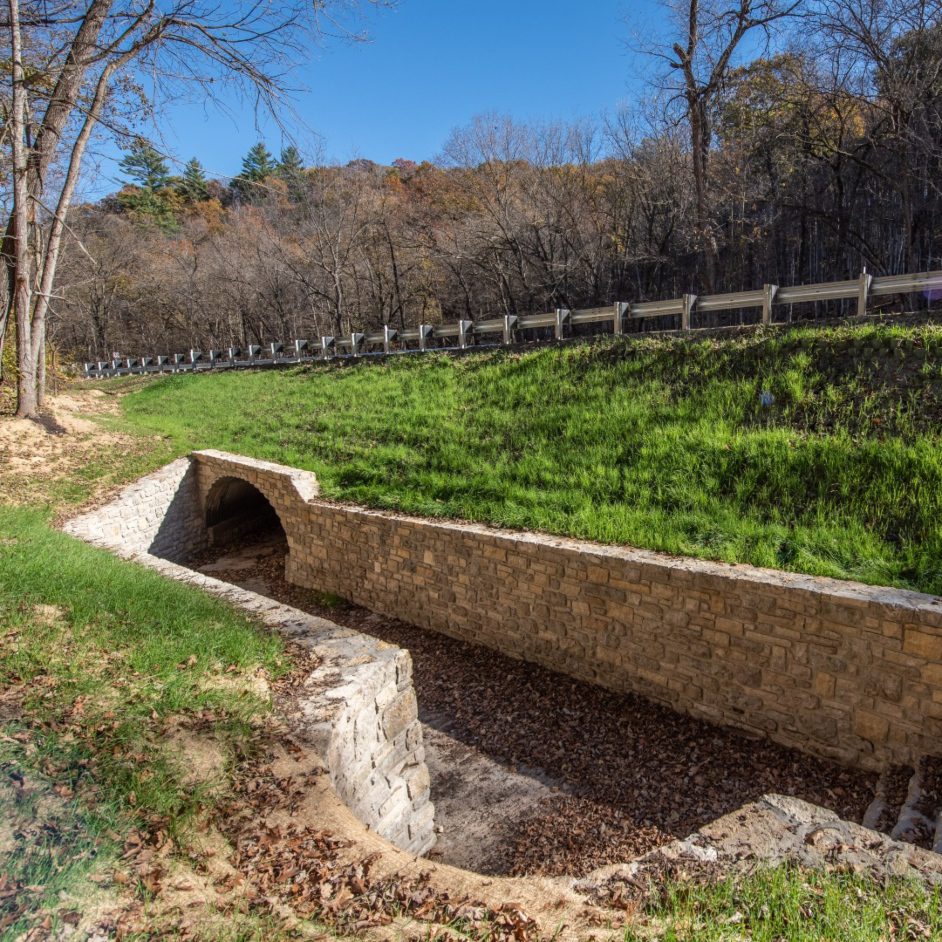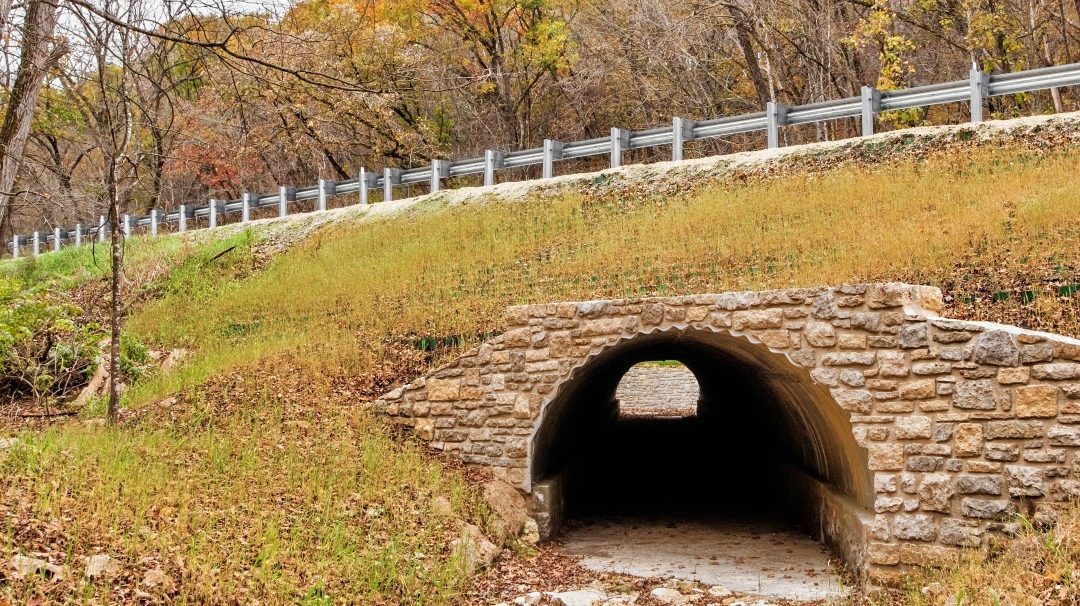
In the 1930s, workers employed by the Civilian Conservation Corps, the government program that helped pull America out of the Great Depression, reshaped Minnesota.
They built roadways, public buildings, bridges, sidewalks, stadiums, swimming pools, and even airports across the state. Minnesota’s state parks contain hundreds of structures erected by the CCC: Designed in a rustic style that’s almost immediately recognizable, many of these structures are much beloved and often photographed. But others are hidden, visible only to park visitors who leave the beaten path.
Four bridges in Whitewater State Park, just east of Rochester, are among those rarely glimpsed treasures. Built in 1936, the metal-arch bridges span culverts that divert stormwater and support Trunk Highway 74 as it passes through the park’s rolling landscape. Flash floods are common in the park, which lies within Minnesota’s Driftless Area, a region full of steep hills, deep ravines, and limestone bluffs that escaped glacier cover during the last ice age. The culverts facilitate drainage and prevent the roadway from washing away when waters rise quickly.
Eroding history
In 2016, MnDOT hired LHB to assess the bridges, which had degraded significantly over the decades. Additional soil covering had been laid down over the culverts each time the highway was repaved, leading to steep slopes at the roadway’s edges. This added structural stress to the stone masonry headwalls capping the inlets and outlets of the culverts. Mortar in the masonry headwalls had begun to crack and crumble, and some of the stone blocks had begun to erode. LHB engineers Joe Litman and Lisa Karlgaard worked on the project, conducting a condition and site investigation, studying rehabilitation alternatives, documenting environmental issues, coordinating with the MnDOT project team, and producing the final bridge preservation plan. Adam Beissel and Brad Scott, two other engineers with LHB, led the roadway design.
“It was a unique project,” Litman says. “You don’t see a lot of metal multi-plate arches anymore. And these are outstanding because the headwalls are constructed of masonry. They’re quite eye-catching.”
The four culverts are closely spaced and connected by a rock-lined drainage ditch that snakes back and forth under the highway. When water accumulates, the flow drains into the middle fork of the Whitewater River. “One of the most interesting things about the culverts is that they don’t serve a typical stream or river. They’re dry most of the time,” Karlgaard says. “But when there’s a long storm or a sudden deluge, the culverts are critical. When you need them, you need them.”

Today, the CCC structures also represent a lost moment in history. Less than 40 metal multi-plate arch bridges still exist in Minnesota (they fell out of fashion after World War II, superseded by less costly and more durable technologies). The headwalls, made of Oneota Dolomite hewn from a quarry within the park, are ruggedly decorative but invisible to drivers passing overhead—the sort of detail that would likely be “value engineered” out of most modern structural projects. Such touches, however, make the culverts historically significant. They are key components of the Whitewater State Park Historic District, a 563-acre parcel that in 1989 was listed in the National Register of Historic Places, and contributing elements to the overlapping Trunk Highway 74 Historic District, where LHB is working with MnDOT on studies and rehabilitation designs for two additional culverts and a bridge.
Repair & restoration
Much of LHB’s work was aimed at preserving the historic character of the bridges. The corrugated metal arches, for example, were assessed for safety and durability and allowed to remain in place. The stone headwalls were largely dismantled, deteriorated stones replaced, and the walls repointed—in accordance with historic standards. Where changes were required, the LHB team made efforts to conceal the work: large rocks strategically placed to slow erosion, also known as riprap, were used to protect the streambed and adjacent slopes. But to maintain the site’s historic look, the designs buried the riprap under reclaimed sediment within the stream bed and under seeded compost on the steep slopes. The result was reinforced surfaces that looked nearly undisturbed.
Structural issues were also dealt with. The slopes of the soil from the bridge headwalls up to the roadway could not be changed, so the soil mass was reinforced using layers of wrapped geotechnical fabric and geogrid on the faces, taking pressure off the reconstructed masonry walls and reducing the potential for erosion. When vegetation takes root, the changes will be nearly invisible.
“I think it’s exciting that these bridges are being preserved,” Karlgaard says. “We work on a lot of historic bridges at LHB, and even the simplest ones always have some surprising and notable aspects to them—these bridges are no exception.”
Click here to read about other LHB bridge projects.

